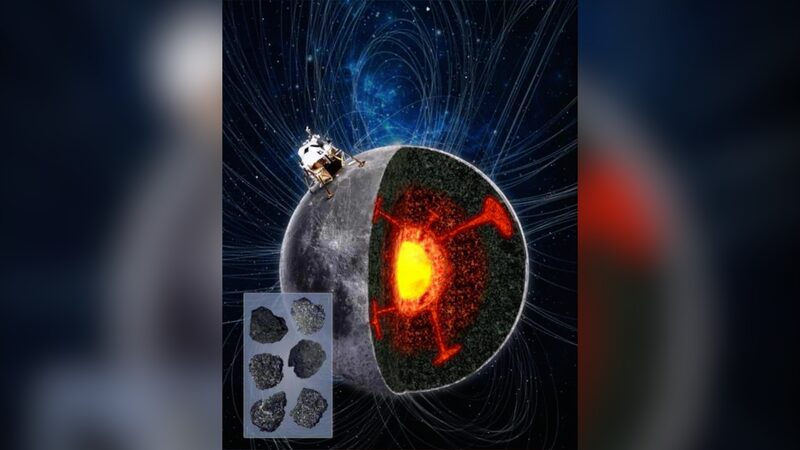Ever wondered if the Moon has a magnetic personality? 🌕🧲 Well, China's Chang'e-5 mission just spilled the cosmic tea! ☕✨
In an out-of-this-world discovery, samples collected by the Chang'e-5 lunar probe have revealed that our celestial neighbor had a weak but active magnetic field about 2 billion years ago. That's right—the Moon had its own magnetic vibes, even if they were on the low-key side! 🔮
Understanding the Moon's magnetic field is like unlocking a lunar time machine. It gives us clues about its internal structure, how it kept warm (or didn't), and what was happening on its surface way back when. 🕰️🌌
A team of stellar researchers from the Institute of Geology and Geophysics (IGG) under the Chinese Academy of Sciences analyzed nine basalt samples from the Oceanus Procellarum (fancy Latin for \"Ocean of Storms\"). These rocks are total lunar OGs, offering a rare peek into the Moon's magnetic history between 3 to 1 billion years ago—a period that's kinda been ghosting us until now. 🌚🔍
Their findings? The Moon sported a magnetic field measuring around 2 to 4 microteslas—less than 10% of Earth's current field strength. Not super strong, but definitely persistent! 💪 This epic discovery was even featured as the cover story in Science Advances. Talk about making waves in the science world! 🌊📖
So, what's powering this lunar magnetism? Researchers think it might be due to ongoing thermal convection deep inside the Moon, keeping things hotter and more active than we imagined. 🌋🔥
But wait, there's more! 🛸 The team also found evidence suggesting the Moon's magnetic field didn't just fade away—it might have had some surprise comebacks. A study published last month in Nature hints at an unexpected resurgence 2.8 billion years ago. All thanks to samples from the far side of the Moon collected by the Chang'e-6 lunar probe. 🌖🎉
These discoveries together paint a picture of a Moon that's way more dynamic than we thought. Its magnetic field not only lasted into its midlife but also had some wild fluctuations. Kinda like that friend who's always full of surprises! 🤯
Chang'e-6, which returned to Earth last year with 1,935.3 grams of lunar goodies from the Moon's mysterious far side, continues to help scientists piece together this lunar puzzle. 🧩🌠 And let's not forget Chang'e-5, which brought back 1,731 grams of rocks and soil back in 2020. These missions are seriously leveling up our understanding of lunar history! 🚀🌟
Why does this matter? Knowing about the Moon's magnetic past could help us understand space weathering and even the presence of volatile materials like water on the lunar surface. Basically, it's a giant leap for lunar science and maybe even for future space adventurers! 🌊💧🌌
The Moon just got a whole lot more interesting, don't you think? 😉🌝
Reference(s):
Chang'e-5 samples reveal moon's weak but persistent magnetic field
cgtn.com




